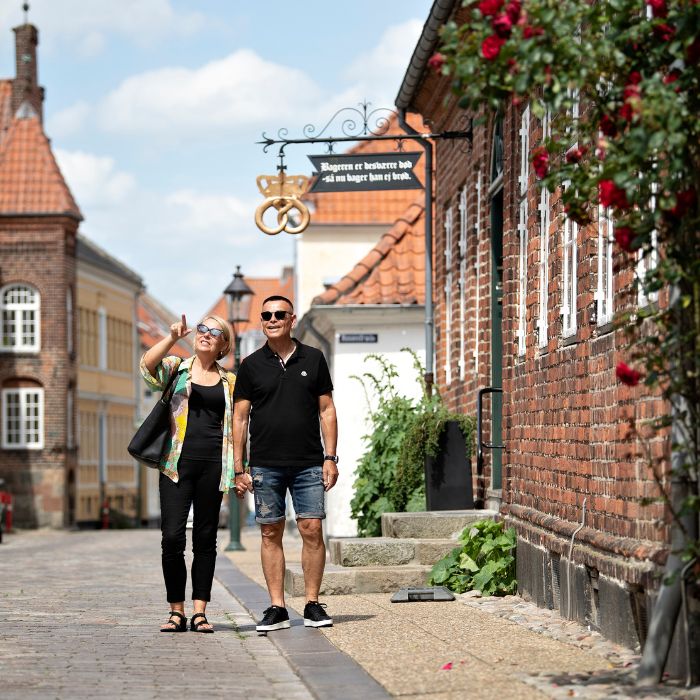
On your own in Viborg
Discover Viborg on your own.
The tour covers the most important sights and historical sites.
Skovgaard Museet
is the art museum in Viborg. It houses works by the Skovgaard family as well as changing art exhibition.
Viborg Cathedral
with its two towers, is the symbol of the city. The church was founded in the 1100’s but after several fires, the latest one in 1726, only the crypt remains from this period. The remainder
of the cathedral has been rebuilt several times.
Latinerhaven
Take a walk in Latinerhaven in the middle of Viborg and smell the many different flowers and herbs. Originally in 1726 the garden was a fire site and later on from 1760 it became the garden belonging to the headmaster of the grammar school.
Hjultorvet
is an old city square. Originally a graveyard, belonging to one of the old catholic monastreies in the medieval Viborg.
Nytorv
One of the town squares in Viborg. During the Middel Age the catholic monastery Sct. Hans was located on the square. The remains of its cemetery is still to be found 2 feet under the tiles.
Hans Tausens Minde
In 1525 the danish monk Hans Tausen came to Viborg where he at Gråbrødre Kirkegård (churchyard) preached the thoughts of reformation and there by started the reformation of Denmark. In 1836 a small park was established on the spot where he preached, to honor the monk who reformed the danish church.
Karnapgården
One of the oldest buildings in Viborg. The cellar is from before year 1500, while the rest of the building is dated back to the middle of the 15. Century
Navnløs
(Nameless) is the narrowest street in Viborg. The cobblestones make the alley unfit for modern traffic. The alley got its name back in 1824, when city council forgot to name it in a report to the magistrate in Copenhagen
Sukkenes Bro
The name means “The bridge of Sighs”. It was made in 1919 and connects the prison with the former courthouse. Soon it will house the new town museum.
Kongehyldningsmonumentet
The site marks that danish kings for centuries were crowned and hailed in Viborg before ascending the throne.






